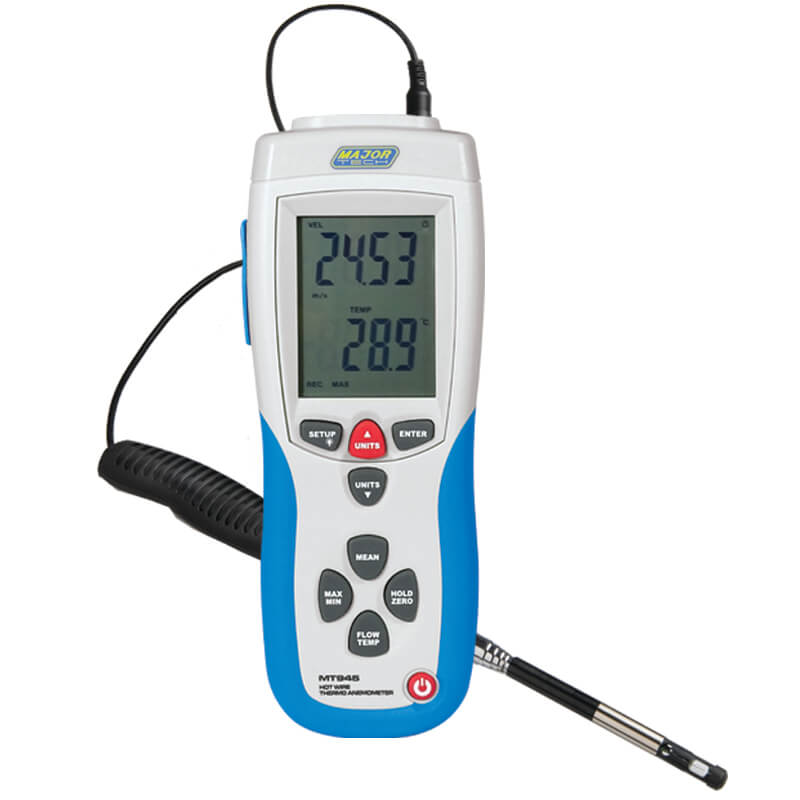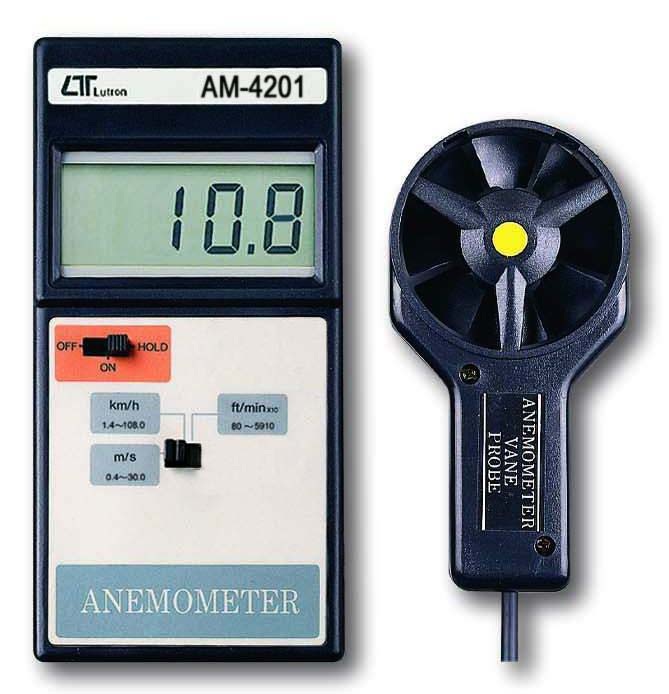How to Preserve and Care for Your Anemometer to Guarantee Longevity
How to Preserve and Care for Your Anemometer to Guarantee Longevity
Blog Article
All You Required to Understand About Anemometers: How They Work, Why They Issue, and Where to Use Them
Anemometers, though typically ignored in the realm of scientific instruments, play a crucial role in different fields, offering beneficial understandings right into wind speed and air movement patterns. As we dig into the intricacies of anemometer innovation, we will certainly uncover the internal functions of these tools, their significance, and the essential factors to consider when selecting the best anemometer for certain applications.

Anemometer Fundamentals
A necessary tool made use of to determine wind rate and direction, the anemometer plays a vital duty in weather forecasting and numerous sectors. An anemometer normally contains 3 or four mugs that revolve in the wind, a vane that points right into the wind, and sensing units to track the activities or rotations. By determining the turnings or activities over a certain amount of time, the anemometer can establish wind rate. The vane assists establish wind direction by directing right into the wind, supplying beneficial data for weather condition forecasting, aviation, maritime procedures, ecological monitoring, and wind power applications.
There are various types of anemometers readily available, consisting of cup anemometers, vane anemometers, hot-wire anemometers, and sonic anemometers, each with its distinct features and applications. Mug anemometers are frequently utilized for fundamental wind speed measurements, while vane anemometers are chosen for directional dimensions.
Concepts of Anemometer Operation
Building on the fundamental understanding of anemometer essentials, the principles of anemometer operation illuminate the technicians behind wind speed and direction dimensions. Anemometers operate the principle of air flow influencing a sensor, creating it to turn. Mug anemometers, as an example, have three or more cups that capture the wind, creating them to spin much faster as the wind speed boosts. The turning speed is after that exchanged a wind speed dimension. Vane anemometers, on the other hand, utilize a tail or a probe that straightens itself with the wind direction, providing a dimension of wind instructions based on the alignment of the sensor. Hot-wire anemometers count on a heated wire that cools off as wind overlooks it, with the rate of cooling identifying the wind rate. Ultrasonic anemometers step wind speed and instructions by evaluating the moment it takes for ultrasonic signals to take a trip in between transducers. Recognizing these concepts is critical for reputable and exact wind dimensions in various applications.
Significance of Anemometers
The value of anemometers in weather forecasting and different sectors can not be overemphasized. Anemometers play a crucial role in measuring wind rate and direction, offering necessary data for climate forecasting, climate research studies, environmental monitoring, and air travel procedures. Meteorologists rely upon anemometers to collect exact wind information, helping them understand weather patterns, anticipate tornados, and problem prompt warnings to the public. In industries such as construction, agriculture, renewable resource, and maritime procedures, anemometers are utilized to maximize processes, make certain safety and security, and boost efficiency. For instance, wind ranch operators utilize anemometers to analyze wind problems and take full advantage of electricity manufacturing from check out here wind generators. In the maritime market, anemometers aid ship navigating by offering real-time wind info to captains, assisting them make notified decisions to make certain secure trips. In general, anemometers are indispensable tools that contribute considerably to security, performance, and educated decision-making in weather forecasting and a vast array of markets.
Applications Throughout Different Industries
Applications of anemometers cover across varied industries, showcasing their flexibility and utility beyond weather forecasting. In the sustainable energy field, anemometers play a crucial duty in evaluating wind problems for wind farm placements, making sure optimum power production. Industries like building and construction and mining utilize anemometers to keep an eye on wind rates, essential for safety and security procedures, particularly when operating at elevations or in open-pit mines where solid winds can position threats. Anemometers are additionally essential in the aeronautics market, helping pilots in understanding airspeed and wind instructions for safe take-offs and touchdowns. The maritime market take advantage of anemometers go to the website for ship navigating, helping seafarers prepare for weather condition adjustments and adjust paths as necessary. In agriculture, anemometers help farmers in taking care of crop splashing by supplying real-time information on wind speed to prevent drift. Anemometers discover applications in Heating and cooling systems to enhance airflow and improve energy performance in structures. The varied use cases of anemometers highlight their relevance across different sectors, highlighting their indispensable duty in enhancing functional safety and security and efficiency (anemometer).

Picking the Right Anemometer for Your Needs
For general purposes, a cup anemometer is suitable for measuring wind rate, while a vane anemometer gives wind direction data. Hot-wire anemometers are optimal for low airspeed measurements, and ultrasonic anemometers offer high precision and durability.

Conclusion
In verdict, anemometers play a critical role in determining wind rate and direction throughout various markets. It is vital to consider the relevance of anemometers in order to make informed decisions when selecting the most ideal device for measuring wind conditions.
There are different kinds of anemometers available, including cup anemometers, vane anemometers, hot-wire anemometers, and sonic anemometers, each with its one-of-a-kind features and applications. Cup anemometers are frequently made use of for fundamental wind rate dimensions, while vane anemometers are favored for directional dimensions. Hot-wire anemometers are suitable for low airspeeds, and sonic anemometers are ideal for high-precision measurements in research and industrial setups.Structure on the fundamental understanding of anemometer essentials, the concepts of anemometer procedure elucidate the mechanics behind wind speed and direction measurements. For basic objectives, a mug anemometer is suitable for measuring wind rate, while a vane anemometer gives wind direction data.
Report this page